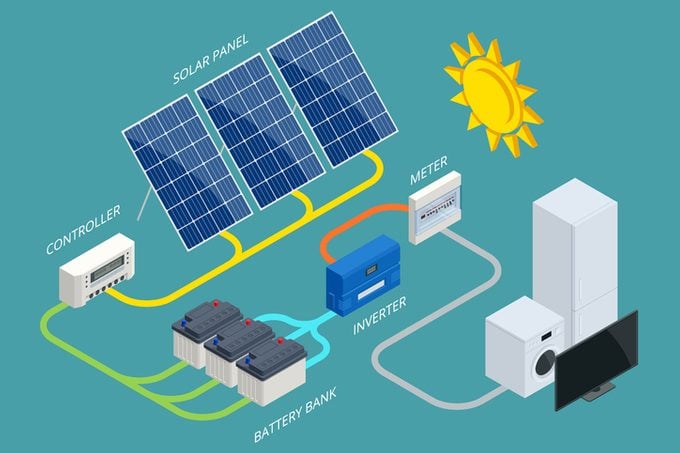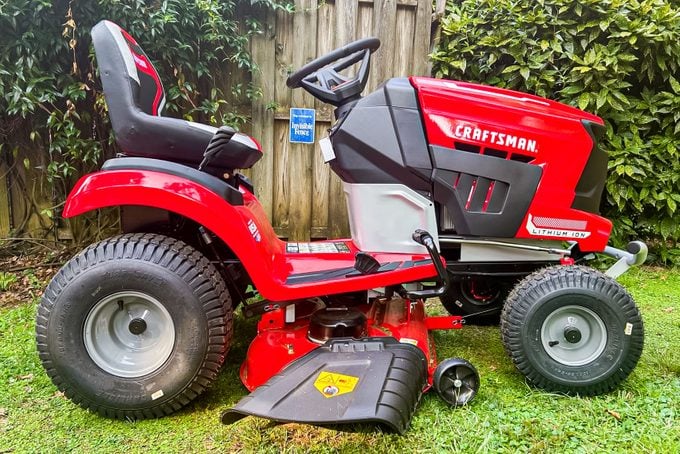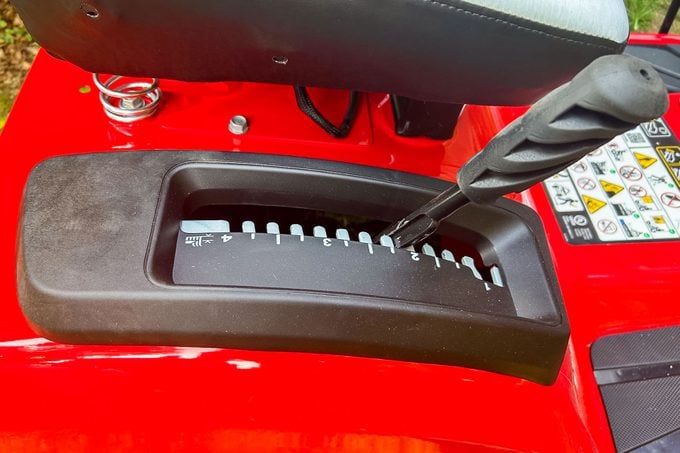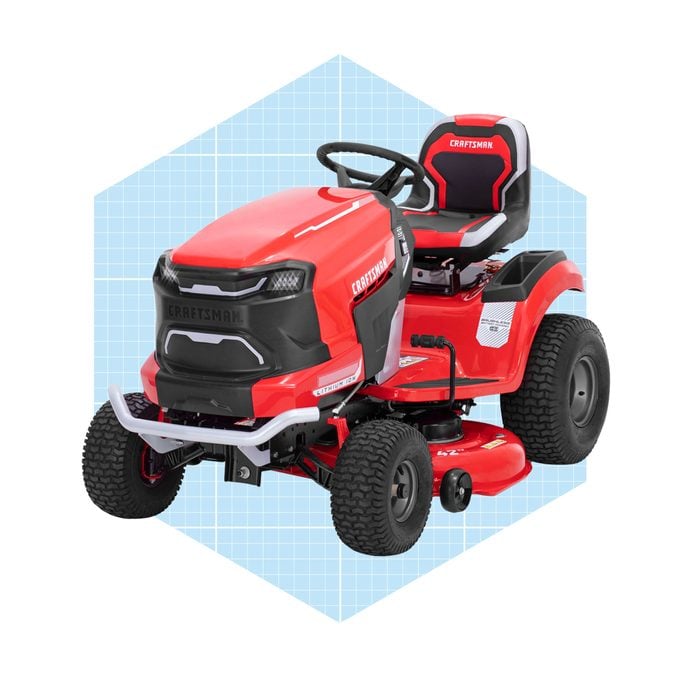There are two types of people before a camping trip: those who get all bright-eyed and bushy-tailed at the thought of packing and those who wait until the last minute to haphazardly toss an assortment of gear and clothes into a duffle bag. I happen to fall into the former camp, and I love any piece of gear that helps me better organize other gear. Yes, gear for gear! So when I heard about The North Face Base Camp gear box, I jumped on the opportunity to try it myself. It’s collapsible, stackable, water-resistant and roomy—I figured, what’s not to love?
I had a couple of diving and snorkeling excursions coming up at some Central Florida springs and in the Florida Keys, so I decided to take the box along with me as often as it made sense. (Spoiler: I ended up liking the box so much I even take it out for a simple beach day now.)
In my in-depth North Face Base Camp review, I cover all of the pros, cons and need-to-know information about this popular gear box.
What is The North Face Base Camp gear box?

The North Face gear box is exactly what it sounds like: a box that holds gear. But this isn’t your average plastic, snap-lid storage box you can pick up on a whim at The Home Depot. This box was built with purpose.
It’s clear that the Base Camp box was thoughtfully crafted with outdoorsy people in mind. For starters, the box is constructed of The North Face’s Base Camp material, a well-known and well-loved textile among outdoor enthusiasts. This material is 300-denier polyester with a durable, water-resistant thermoplastic polyurethane (TPU) coating that resists abrasion and tearing and is ultra-easy to clean.
Additionally, the Base Camp box proves that The North Face knows its customers, thanks to its collapsible and stackable properties. When not in use, the box folds down and flattens out to be no thicker than a good book. This is a big bonus for those of us who live in camper vans or RVs (or, like me, tiny studio apartments to make it easier to fund an adventurous lifestyle).
The North Face Base Camp Gear Box Features
You might be thinking, “OK, so? A box is a box.” As an avid outdoors person who is constantly packing, unpacking and storing things, I’m here to tell you that isn’t true! Let’s take a more in-depth look at the features of the Base Camp box and how it makes outdoor adventures easier.
Sturdy Frame
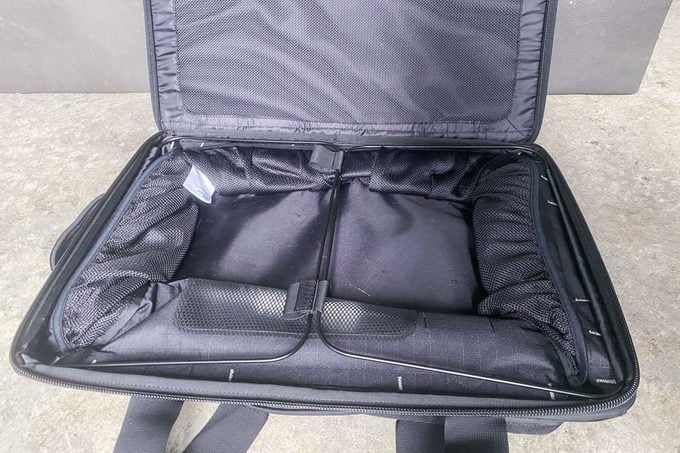
The Base Camp gear box sports a lightweight, yet durable, metal frame consisting of two fold-in arms. When the box is in its collapsed position, you simply push each metal arm downward and outward to pop the frame into place.
Collapsible
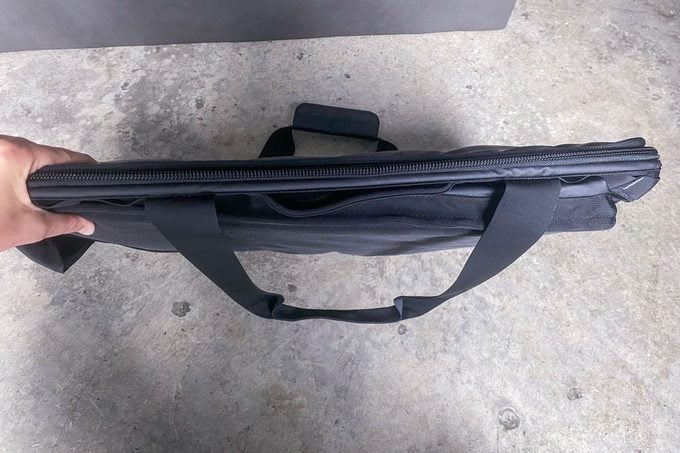
As mentioned above, the frame collapses so the box compresses and lies flat when you’re not using it. This makes it fantastic for people living in small spaces—I can easily slide the collapsed box under my bed or couch when I don’t need it. To collapse the frame, all you have to do is pull the nylon tab on each metal arm. (When I first got the box, I didn’t notice the tabs, and it was difficult to pop the arms out of place. But with the tabs, it couldn’t be easier, so make sure to look for them.)
Stackable
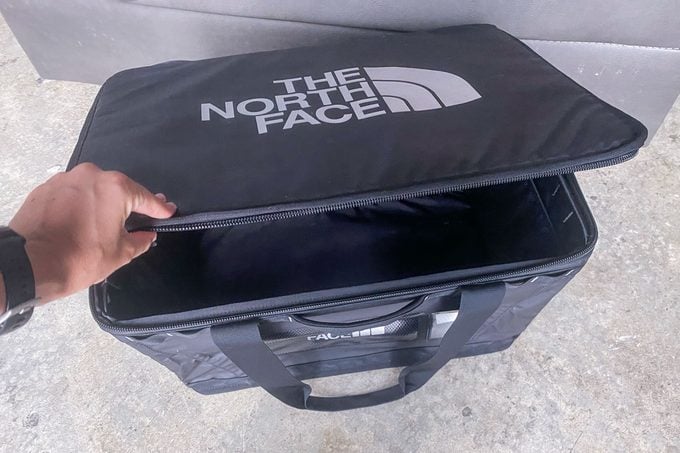
In addition to being collapsible, The North Face Base Camp box is stackable whether it’s collapsed or filled with gear. The top of the box is broad, flat and smooth, making it easy to place another box on top (or really anything, for that matter).
Lightweight
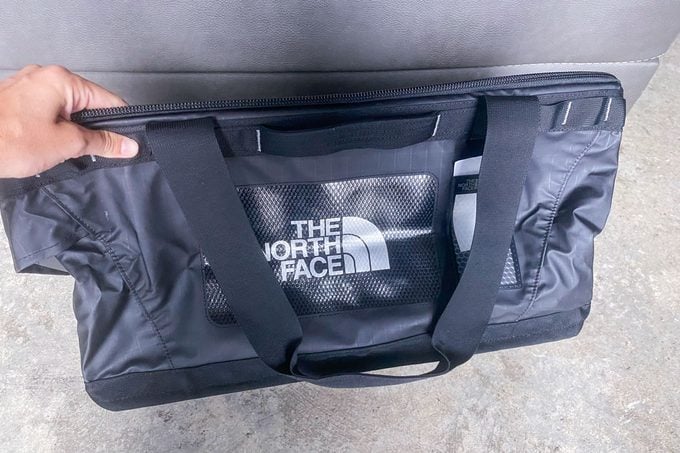
The medium-sized box weighs just 4 pounds, 1.8 ounces, and the large-sized box weighs slightly more at 5 pounds, 8.2 ounces. For reference, this plastic gear box with a lid that can hold the same amount as the medium box (about 15 gallons or 58 liters) weighs 5 pounds, 2 ounces, so not only is it heavier, but it’s also more difficult to carry due to the hard plastic and handle design.
Dual Handles

Speaking of being difficult to carry, the Base Camp box won’t be: It features tote handles and fabric side handles, so you have multiple comfortable grip options for transportation. In my experience, it’s easier to use the tote handles when you’re alone and the side handles if you have another person to help. That said, I was able to use the side handles on my own, too.
Durable
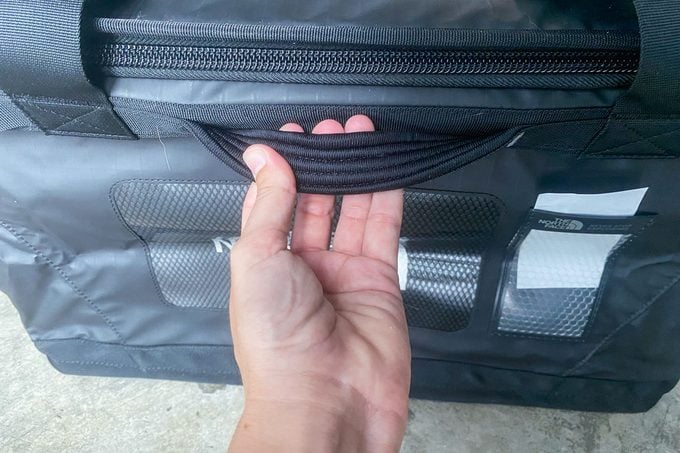
Perhaps the biggest draw to The North Face Base Camp gear box is its 300-denier polyester and TPU construction. This combination of textiles is ultra durable and abrasion-resistant, so you don’t have to worry about scuffing, ripping or tearing the fabric.
One thing I will call out about the fabric is that it can hold onto smells. I left some damp beach towels in this box for about 24 hours (oops) and after removing them, I noticed that the interior of the box continued to smell mildewy until I wiped it clean with antimicrobial cleaner. So it seems to be an easy fix, but it’s something to be aware of.
Weather-Resistant
The Base Camp material is also resistant to water; I know this because I got caught in a torrential downpour at the beach (#MiamiThings). Thanks to the TPU construction, my beach towels, phone, wallet and, most importantly, snacks, were safe and sound.
That said, because this box features a zippered closure and a canvas bottom (though lined), I wouldn’t recommend leaving it full of items in a weather-exposed area. While the fabric is water-resistant, the box isn’t entirely waterproof, and extended exposure to precipitation could result in your gear being compromised.
100% Recycled Fabric
According to the The North Face website, these gear boxes are made of 100% recycled material. As someone who loves the outdoors and strives to protect it, this is a really important component.
Interior Storage Pockets
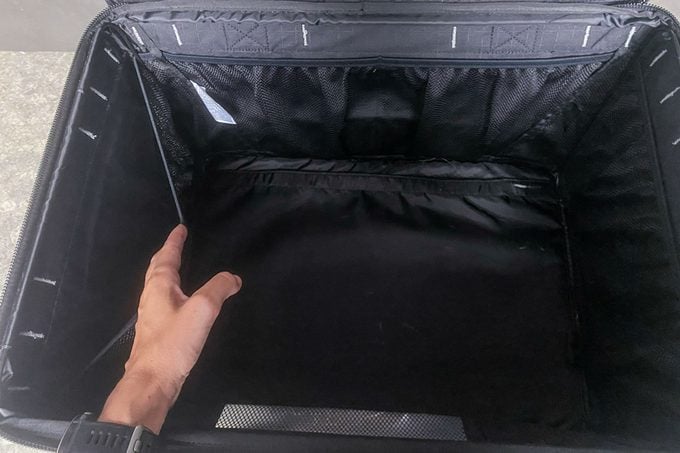
The Base Camp gear box features multiple interior storage pockets to better organize your gear, no matter the adventure. There are four mesh drop-in pockets along the sidewalls, plus a fifth zippered mesh pocket on the interior of the lid. There’s even a Velcro pocket on the interior of the bottom of the box. I haven’t found a use for that bottom pocket yet, but I’m sure it’ll come in handy at some point—maybe for dirty hiking clothes?
Outer Storage

What’s more is that the box has additional outer storage. Just beneath the zipper on the exterior, you’ll find wraparound daisy-chain storage links made of woven nylon. You can clip carabiners to these for easy access to things like a headlamp, flashlight, car keys, dog collar or first aid kit. And on one side of the box (the left, if The North Face logo is facing you), there’s a drop-in pocket with a flap closure. I’ve found this side pocket to be useful for doggy bags, sunglasses, snacks and my wallet.
Gear View Window

You can see what’s in your box without unzipping it, which is helpful when you have multiple boxes stacked, thanks to the view window on the front of the box. I will say it’s still a little tough to see through the panel, but if you look hard enough, you can do it.
Outer ID Label

On the front exterior, The North Face added an ID label, where you can slip in an ID card just like you’d put in a luggage tag on your suitcase.
Two Size Options
The Base Camp gear box is available in a medium size (holding about 58 liters) and a large size (holding about 86 liters).
Zippered Closure

When you’ve got everything packed up and it’s time to hit the road, secure your gear with the box’s durable zipper. The North Face included zipper grips for ultimate ease.
How We Tested It
At the time of writing, I’ve been using and testing The North Face Base Camp gear box for several weeks. I used it to pack my gear for several outdoor adventures, including free diving and swimming excursions in Central Florida, a 10.5-mile river kayaking trip, and a snorkeling trip in the Florida Keys. I also used the box in place of a tote bag for beach days at my favorite local spots. I also tested the box in my home with various camping gear, packing and unpacking with various items to see how much (and what types of gear) it could conveniently and easily fit.
During my testing, I made sure to take note of several factors, including:
- Ease of use
- Comfort while toting the box
- Capacity
- Weather-resistance and durability
- Convenience
- Storage of the box itself when not in use
Ultimately, I’d recommend this gear box as a general storage item, but not necessarily something to take with you on active excursions. For instance, the Base Camp box was perfect for neatly transporting my gear to the drop-in for my kayaking trip, but it’s too bulky to actually bring on a kayak. It also proved to be the ideal fit for beach days, and while I haven’t been able to take it car camping yet (it’s too hot and buggy in South Florida), this gives me an inkling that it’s the optimal fit for that, too.
Pros
- Stackable and collapsible
- Abrasion-resistant, durable fabric
- Holds 58 or 86 liters, depending on size
- Water-resistant
- Easy to wipe down
- Durable, easy-to-close zipper
- Multiple interior storage pockets
- Exterior storage pockets
- Exterior daisy-chain storage
- Gear view window
- ID card slot
- Dual handles (tote and side)
- Lighter in weight than standard hard plastic storage box
Cons
- Expensive
- Fabric can hold onto icky smells (but seems easy to get rid of)
- Bottom of the box is a canvas/woven material, which is not water-resistant (but the interior is protected by liners)
FAQ
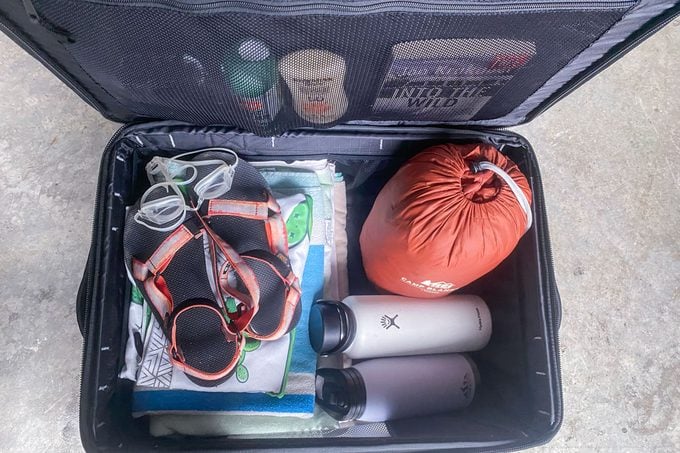
What do I use my gear box for?
Use your Base Camp gear box to transport gear, clothing and food for any purpose. You can also use it for storage of items in your home or garage.
Is The North Face gear box worth it?
If you are looking for a durable, water-resistant, convenient gear box to make packing easy, yes, The North Face gear box is worth it.
What’s special about The North Face Base Camp box?
This gear box is designed to hold a lot of gear and keep it safe during unideal weather conditions, but also to pack down and be out of the way when not in use. It’s lightweight and easier to carry than a standard hard plastic gear box.
What Other Reviewers Had to Say
Customer reviews are largely positive. On The North Face website, customers praise the box for “perfect execution” and being a “year-round adventure solution.”
One reviewer writes, “I always struggle with organizing my gear for specific activities. A soft duffel bag makes it hard to dig to the bottom while plastic bins just fall apart after a short while. This box is amazing. It has SO MUCH storage.”
“I use it for backcountry skiing in the winter, where it’ll accommodate all my gear (ski boots included) in a neat and organized way,” the reviewer continued. “In the summer, I switch to mountain biking. I’ve also flown with it for a ski trip and while it’s not perfect for carrying over long distances, I thought the organization more than made up for the carry. Also, it looks great. I have it in black”
Many customers wrote that they’ve already ordered a second box or plan to, which tells us a lot.
Product Comparison
The North Face has an entire line of Base Camp storage, with one of the most popular items being the Base Camp duffel. This item has been around for a long time and it consistently receives high praise. We can see why: It’s made of an even more durable material than the box.
The duffel’s body boasts 1,000-denier polyester construction with a polyvinyl chloride (PVC) coating for water resistance. You can carry it like a tote or backpack, and it’s available in sizes extra-small (31 liters) to XXL (150 liters).
Customers call this duffel “nearly indestructible,” and several reviewers say they regret not buying it sooner—and spending their money on cheaper products.
Both the Base Camp duffel and the Base Camp gear box are reliable purchases, depending on what you’re looking for. The duffel might be a better option if you need something more flexible that can compress down, whereas the gear box is a better fit if you prefer rigid storage and easy access to the entire contents.
Final Verdict
After weeks of testing, it’s clear that The North Face Base Camp gear box is a solid piece of gear. It has proven durable, weather-resistant, spacious and convenient, and I’d recommend it to anyone looking for storage solutions for activities that involve car travel.
Where to Buy The North Face Base Camp Gear Box
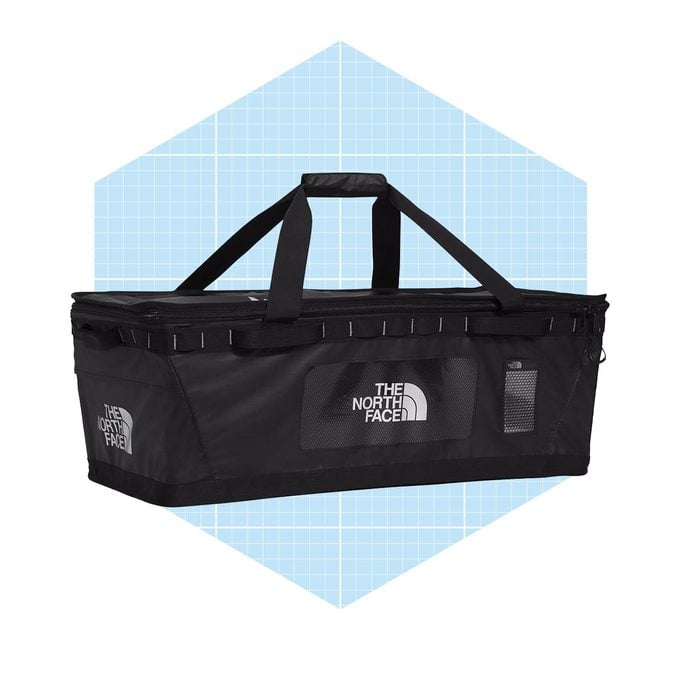
The North Face gear box is available for $175 at Backcountry, Moosejaw and Public Lands. If you’re planning on getting outdoors or camping soon, I recommend snagging the new Base Camp gear box ahead of time.
Shop smarter with our expert recommendations for tools, gear and money-saving deals on can’t miss DIY and home products. Sign up for the Stuff We Love newsletter.
Article source here: We Tried the New North Face Base Camp Gear Box, and It’s Coming on Every Adventure


